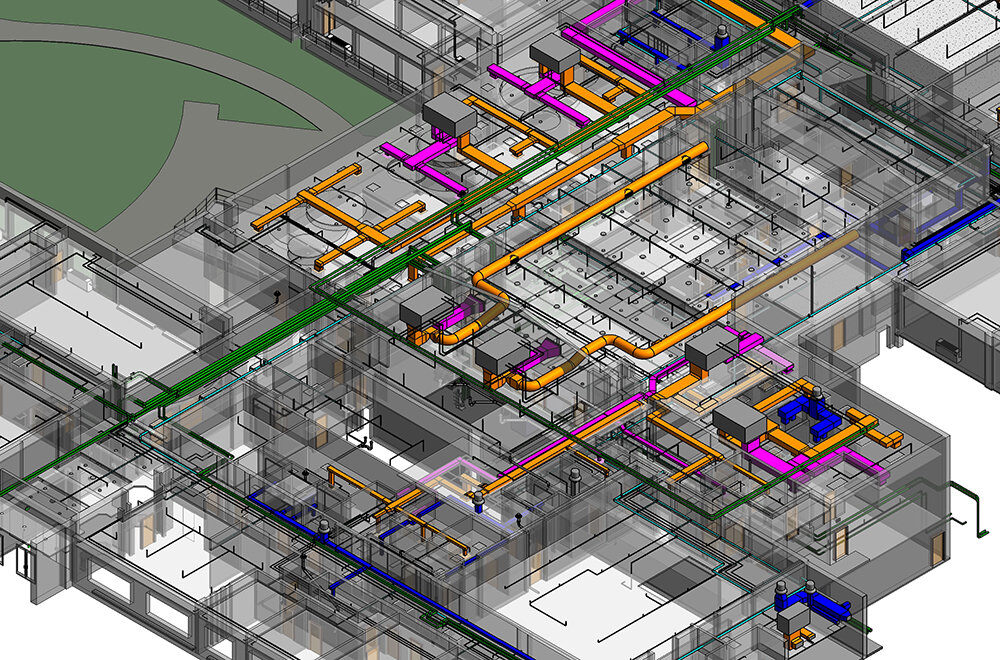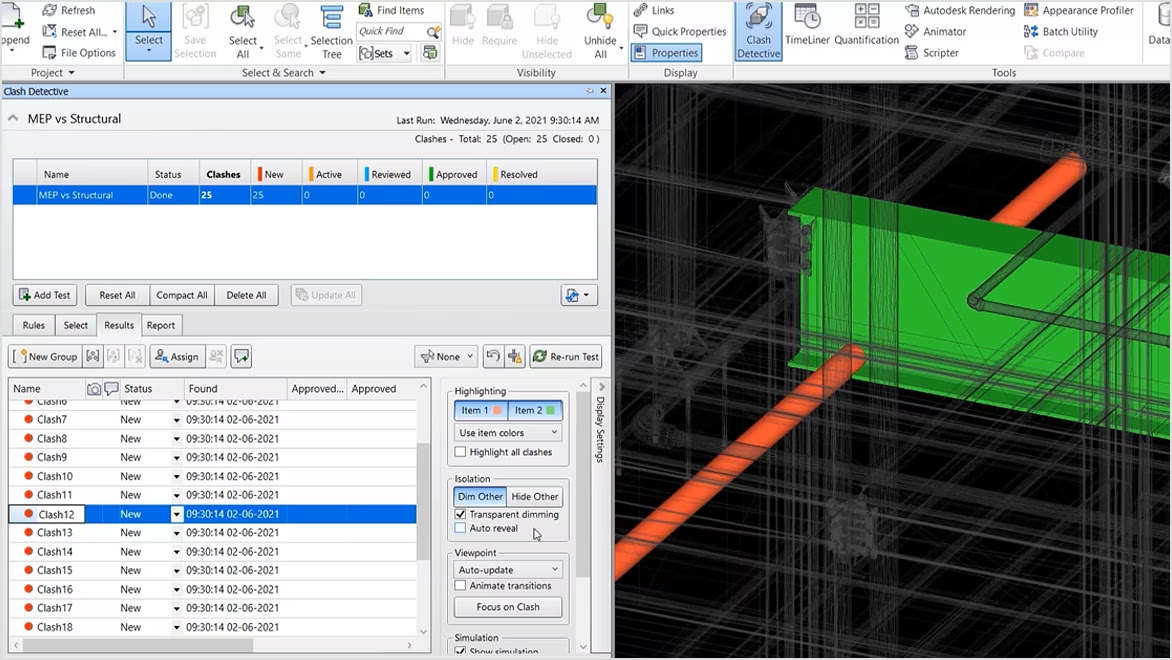
The global construction industry has been evolving at lightning speed, and one major catalyst for this transformation is the integration of Building Information Modelling (BIM) with MEP systems. Whether it's a soaring skyscraper in Dubai or a futuristic airport in Singapore, BIM MEP is revolutionising how we design, build, and maintain our most complex structures.
From reducing errors to enhancing collaboration, MEP projects powered by BIM are no longer the future—they are very much the present. Let's take a tour around the world to see how BIM MEP is shaping iconic buildings and infrastructure, and what that means for professionals in the MEP engineering space.
What is BIM in MEP & Its Role in Construction
Before we hop on our global tour, let's quickly understand what BIM in MEP actually means. To break it down, MEP meaning in construction, refers to Mechanical, Electrical, and Plumbing systems. These are essential to the functioning of any building—think heating and ventilation, lighting, water supply, and fire protection.
Now, throw BIM MEP into the mix, and you get a digital representation of a building’s MEP design, with every pipe, duct, and wire modelled in intricate detail. Using BIM MEP software, engineers and architects can collaborate on a single platform, making MEP work in construction much more efficient. It allows better visualisation, clash detection, coordination, and asset management, making it a game-changer for large and complex structures.
Why BIM MEP is Essential for Large-Scale Infrastructure and Building Projects
Imagine coordinating thousands of components in a mega airport or metro station, without errors. Sounds impossible, right? That's precisely why BIM MEP services are indispensable. In large-scale MEP projects, the complexity of routing and integrating multiple systems can lead to costly mistakes if not managed properly. MEP firms around the world are turning to BIM to manage these intricacies.
From enabling energy-efficient solutions to streamlining maintenance, MEP services powered by BIM help project stakeholders make informed decisions early in the construction process. This reduces rework, saves money, and ensures everything functions as it should, especially crucial for public infrastructure projects with zero room for error.
Top Iconic Infrastructure Projects Using BIM MEP Worldwide
Let's now look at some jaw-dropping examples of global MEP construction marvels brought to life with the help of BIM MEP.

1. Changi Airport Terminal 5, Singapore
A true feat of design and engineering, this mega terminal uses BIM to manage its sophisticated MEP system, including advanced HVAC, lighting, and water management. The collaborative platform ensures seamless coordination among architects, MEP engineers, and contractors.
2. Crossrail, London
One of Europe’s most ambitious underground rail projects, Crossrail has been built using BIM for all MEP design elements, helping coordinate complex systems across multiple underground stations.
3. NEOM Smart City, Saudi Arabia
This futuristic city is relying heavily on BIM MEP services to integrate smart technology with traditional MEP building infrastructure. From intelligent HVAC to automated plumbing, it's a marvel in the making.
High-Profile Commercial Projects Leveraging BIM MEP

BIM MEP isn't just limited to infrastructure; it's also dominating commercial real estate.
1. Burj Khalifa, Dubai
The tallest building in the world required next-level MEP construction planning. BIM helped manage everything from fire safety to air conditioning in a structure that stretches over 800 metres high.
2. Marina One, Singapore
This mixed-use development integrates lush greenery with high-end commercial space. Using BIM, its MEP engineers ensured efficient energy and water usage while maintaining a futuristic aesthetic.
3. Apple Park, California
The spaceship-like HQ of Apple is another great example of a project where BIM helped coordinate complex MEP systems, ensuring maximum efficiency with minimal environmental impact.
Challenges Faced in Global BIM MEP Implementation & How They Were Overcome
Of course, implementing BIM MEP across global MEP projects hasn't been without its hiccups. Different regions have different standards, and training professionals to use advanced BIM MEP software was initially a major challenge. Add to that the high cost of implementation and resistance from traditional MEP firms, and you have a perfect storm.
But over time, these issues were tackled. Industry-wide adoption of open standards, government mandates (like the UK's BIM Level 2 requirement), and the rise of global MEP courses helped bridge the skill gap. Now, BIM MEP is becoming the norm, not the exception.
Future of BIM MEP in Global Construction Projects
The future looks incredibly exciting for BIM in MEP engineering. One major trend is the integration of Internet of Things (IoT) with BIM MEP, enabling real-time monitoring of systems like HVAC and lighting. Another trend is AI-driven design automation, where intelligent algorithms assist MEP engineers in optimising routes and load calculations.
Digital twins, virtual replicas of physical buildings, are also on the rise. These twins will help monitor building performance over time, allowing for predictive maintenance of MEP services.
How Novatr’s BIM MEP Course Prepares Professionals for Global BIM Projects
1. Exposure to Global Construction Workflows
Understand how MEP services are delivered across international markets, preparing you for careers with multinational companies and overseas projects.
2. Certification That Matters
Receive a professional certification recognised by top-tier MEP firms, giving you an edge in today’s competitive job market.
3. Career Support and Placement Assistance
Get help with CV building, interview preparation, and job placements in leading roles within MEP construction and BIM MEP services.
4. Flexible Learning for Busy Professionals
With online modules and weekend schedules, you can upskill without disrupting your current work or study commitments.
Conclusion
From London to Singapore, Dubai to California, BIM MEP is shaping the skylines and infrastructure of tomorrow. The integration of MEP systems with digital modelling is not just enhancing construction—it's redefining it. With the world moving rapidly towards smarter, greener, and more efficient buildings, there's never been a better time to step into the world of BIM MEP.
Among the best options, the BIM Professional Program for MEP Engineers by Novatr stands out the most. For the latest updates, tools, and insights into the MEP and BIM industry, explore Novatr's Resource Page.
FAQs
Q1: Why should a MEP engineer learn BIM MEP software?
Ans: A MEP engineer must learn BIM MEP software to stay relevant in today’s data-driven construction industry. These tools help streamline MEP design, improve accuracy, and boost productivity. Proficiency in BIM software is essential for working on modern MEP projects, especially those involving large-scale or smart infrastructure.
Q2: How do BIM MEP services benefit MEP firms?
Ans: BIM MEP services allow MEP firms to deliver projects with fewer errors, better coordination, and enhanced energy efficiency. They offer visualisation tools for better planning and cost management, making it easier to optimise MEP building elements and accelerate construction timelines for both commercial and infrastructure developments.
Q3: What does MEP mean in construction, and how is BIM changing it?
Ans: MEP meaning in construction refers to the Mechanical, Electrical, and Plumbing systems of a building. BIM is transforming this by providing intelligent modelling that integrates every component of the MEP system. This leads to smarter design, fewer onsite errors, and streamlined workflows in MEP construction projects.
Q4: Can BIM be used in both small and large MEP projects?
Ans: Yes, BIM can be applied to all scales of MEP projects. While large-scale buildings and infrastructure benefit the most, even smaller MEP works in construction use BIM to minimise errors, manage space, and improve system coordination. It is becoming an industry standard regardless of project size.
Was this content helpful to you



.jpeg)



